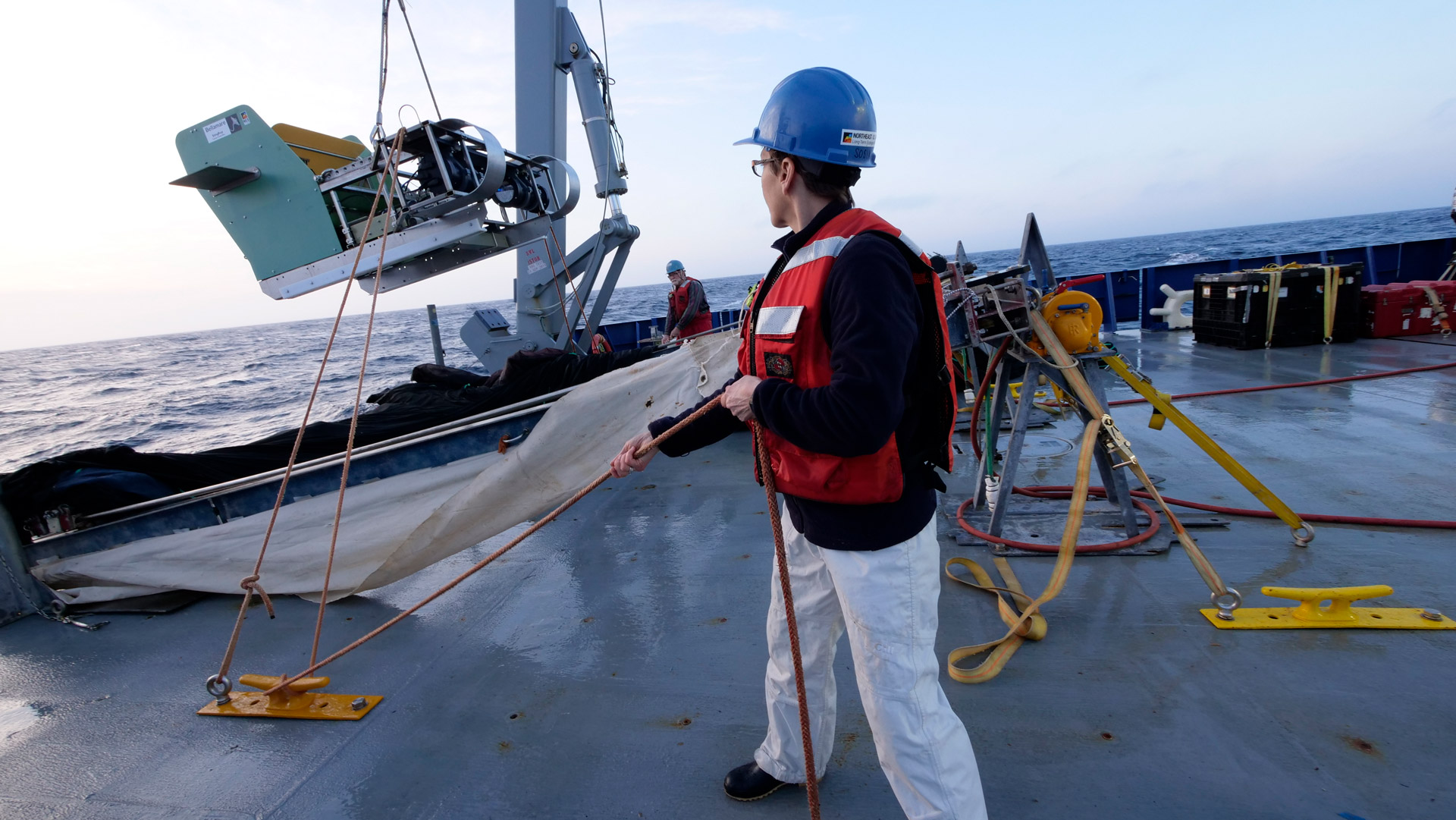WHOI’s new In-situ Ichthyoplankton Imaging System (ISIIS) captures incredibly detailed images of tiny animals called zooplankton, plant-like phytoplankton, jellies, and small fish. The system takes 14 shadowgraph images of organisms that pass through it each second, producing a huge amount of data on the natural behavior of miniscule creatures in the twilight zone. ISIIS is towed behind a ship on a small, commercially-available Stingray “sled,” which also holds sensors that measure depth, oxygen, salinity, temperature, and other water characteristics.
Data collected by ISIIS will be essential for understanding how plankton fit into the ecosystems of the twilight zone and the ocean as a whole. These microscopic organisms form the base of many ocean food webs, play a key role in producing oxygen, and in some cases, remove carbon dioxide from the atmosphere, helping to regulate Earth’s climate. In spite of their importance, however, marine plankton communities are not well understood—in part because the ocean is vast, and plankton communities vary widely by location and over time.
SPECIFICATIONS
| Dimensions | Length: 7.5 feet (2.28 meters) Width: 4 feet (1.22 meters) |
| Weight | 500 lbs (2.26 kg) |
| Propulsion | Towed |
| Power | 300 volts (~45 watts) |
| Depth capability | 3,280 feet (1,000 meters) |
| Endurance | Varies by duration of ship transit |
| Communications | Fiber optic cable |
| Sensors | CTD (conductivity, temperature, depth) sensor; flurometer, optical backstcattering meter, PAR (phytosynthetically active radiation) meter; oxygen meterl; ADV (acoustic doppler velocimeter), ISIIS imaging system |







